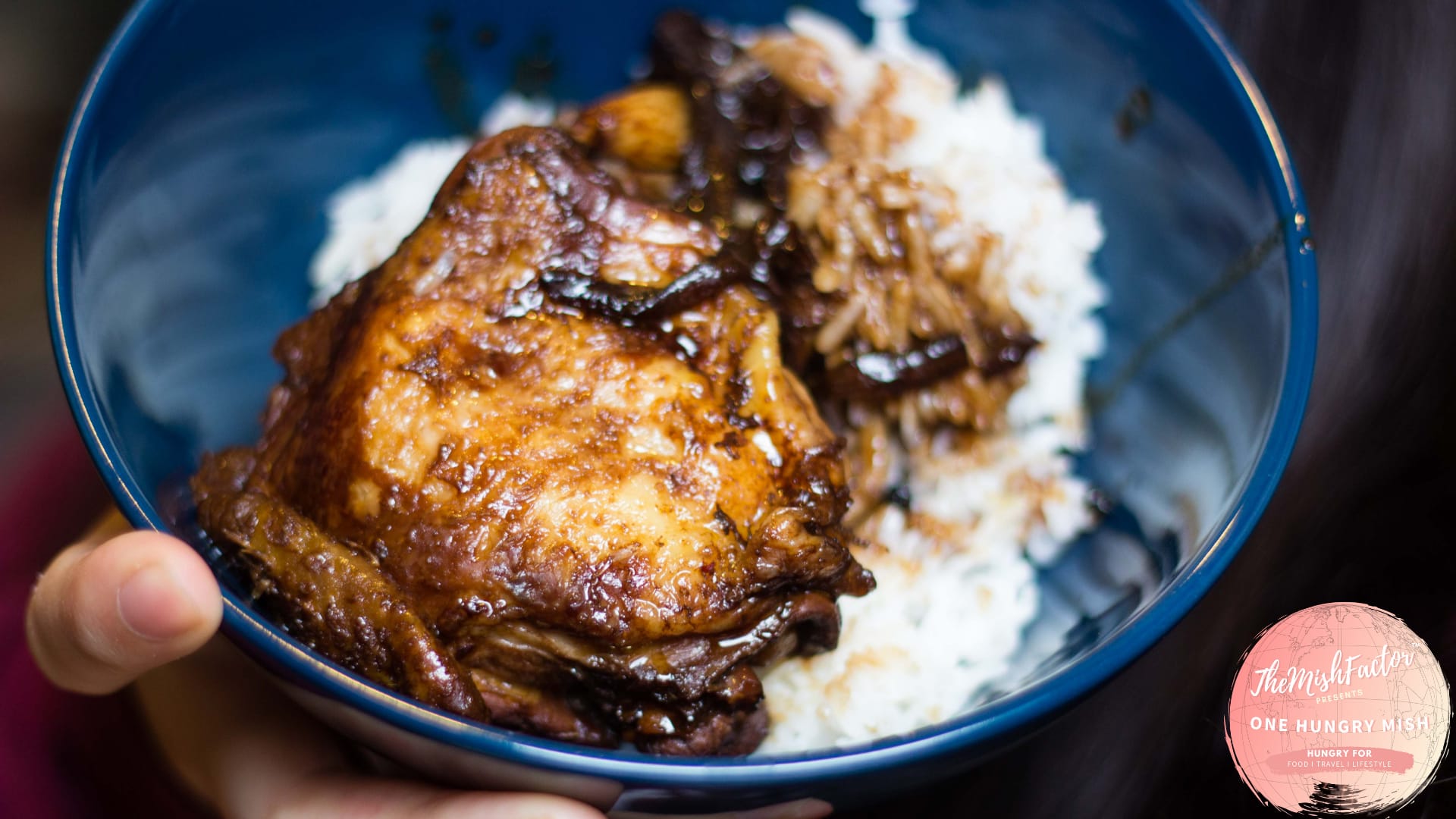Cooking Filipino food, the lifeblood of my mother, is an act of love that brings up countless memories. Some sweeter than others. Growing up as a biracial first generation female in a time where other-ing was commonplace in America had its own twists and turns. But don’t be fooled–that doesn’t discount my love for my pinoy identity, regardless of who wants to play gatekeeper (on either end) at random moments.
(Click here to jump down to recipe!)
Oh the Memories You’ll Know…
My fondest memories are of my mom’s version of pancit, of childhood parties filching puto off the tables, of hunting for binbingka with my pinsans, watching these same pinsans climb the mango tree so we could have some green manga with our bagoong, the shouts of the pandesal boys in the early mornings, the air thick with warming water and plants. And let us not forget our “Cousins forever” bracelets reminding us that we’d choose each other time and time again even if it wasn’t our familial ties that brought us together. The list goes on…
If anything, it just goes to show you how much my pamilya supporting my eccentricities motivates me to be vulnerable, uncomfortable, and push my own limits. I don’t know when I’ll make this post public…but know it’s because of them that I feel emboldened to do what I love and have pinoy pride, even if I sometimes get flack for existing as a “yes and” as a multiracial Fil-Am. Because we should want to share the things we love, which is why I started this blog in the first place. I love learning and nerding out over cultures and experiences, with mine being as important as others’, often hushed for not fitting the majority “Imperial East Asian” assumption of the Asian American identity (especially as a freckly, light skinned Fil-Am). So as you can imagine, all Filipino food holds a special place in my heart.
However, while others love the showy pancit palabok (I see you Jolibee), brag-able kare kare, and yes, even adobong manouk (chicken adobo), the dishes I most covet to make the most are probably the most mundane; chicken adobo isn’t something I often crave or make (my fellow Filipino roommate was scandalized to hear this). I think the last time I made it was for a fellow’s milestone work anniversary. But it’s such an iconic Filipino staple that is super easy to make. Sure you have the gourmands who double fry the chicken, or make a more unctuous one with coconut milk in it’s sauce–these too are wonderful and honest forms of comfort–however the version I know of is probably the most practical.
So what does it taste like?
At first, a pinch of saltiness.
Then a fresh, cleansing hit of tanginess.
With gentle, subtle sweetness to segue into the deeper notes.
Allium dancing with simmering meat and sauce.
I can see the appeal. And hopefully you can too.
If you’ve read my other blog posts, you know I generally steer away of being the one to wax poetic because who doesn’t make fun of another insert skeleton waiting meme length preamble to a dish–but hey, aren’t I a human too? And at least if I’m waxing poetic, it’s not because I saw a leaf fall down and reminded me of something ultimately petty and convoluted. Assimilation shame is real y’all. Biracial shame is real too. (People don’t understand you can be “yes and” on identities.)

Let’s Talk Adobo
Historically, adobo was named such by the Spanish colonizers who witnessed the traditional dish being made and decided to name it something they could understand (adobo is a Spanish word for marinade which is a fair summary of how the flavors come together). The name stuck like the Manila Galleons and aside from using metal pots, it’s safe to say this dish hasn’t changed much throughout the ages.
This rendition of chicken adobo is pretty low maintenance, made to intentionally maximize flavor with the most hands off time consumption (read 24 hour marinade and stewing). Stewing is roughly 20-30 minutes. If you have time and want to be hands off you can also do this in a slow cooker on low for 8 hours, which is what I did for my coworker’s work anniversary potluck! Everyone loved it and couldn’t believe how easy it is to make.
Recipe
Ingredients
Estimated quantities for 4-6 chicken thighs, you want enough marinade to cover the chicken
- 2 cups Soy Sauce
- 3 tbsp White Vinegar
- 1 Medium Onion (Yellow/White)
- 4 Garlic cloves
- 2 Bay Leaves
- 1 tbsp Peppercorn
- 2 tbsp Sugar/Honey
- 1 tbsp Ginger (Optional)
- 1 tsp Pepper Flakes (Optional)
- 2 lb Chicken
- Combine all the ingredients in a container and make sure chicken is completely covered in the marinade.
- Stick in fridge and let marinate at minimum 8 hours, ideally 24 hours slash overnight.
- In a medium (or large if you’re making a lot!) sauce pan with lid, put marinade and chicken on medium heat. Stew covered for up to 30 minutes, uncover and stir every 10 minutes.
- Remove the bay leaves and enjoy atop rice!
Notes:
-Some people say the sugar is optional, I think it’s necessary to combat the salt that soaks into the meat, especially if you use full sodium, or the beloved Filipino Silver Swan brand! Not all soy sauce is created equal. I could rant on about this but I think this drives the point home.
-Honey will yield a thinner sauce, so if desired reduce further once dish is done
-Ginger is a momma bear tweak to reduce balance the flavors and meatiness
-Pepper flakes is a personal tweak, it allows a soft heat build up in the dish that adds an extra comforting note to it
-If you don’t want super salty onions, add fresh ones when you stew the dish
-If you like more tang in your dish but don’t want to acid cook your chicken, an extra splash of vinegar when cooking the dish goes a long way
Stay Hungry
XOXO
Mish ❤
Looking for other Filipino Eats?
- Bibingka (Sweet Rice Cake–Gluten Free!)
- Sinigang (Savory + Sour Tamarind Soup)
- Brazo a Mercedes (Sweet Meringue Cake–Gluten Free!)

